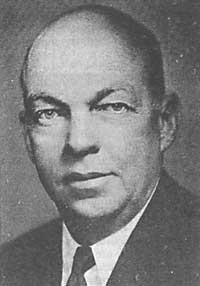Edwin Armstrong
This North American electrical engineer was born a hundred years ago in New York, on December 18, 1890. We should therefore mention the work carried out in electrical engineering (especially in radio transmission) on the occasion of the centenary of his birth.
Edwin Armstrong read from a young age the advances made by Marconi in the wireless telegraphy in informative books and before the age of twenty he began to realize his own radio transmitter and create radio signals.
He studied at Columbia University, where Michael Pupin was his teacher. There he obtained the degree of engineer in the section of electricity.

During World War I, Armstrong developed aerial detection systems. The methods until then existing were based on the sound waves produced by the planes. Armstrong, however, thought it was better to rely on the electromagnetic waves generated in his combustion systems, since in this way he believed it was possible to make detection better and more precise. But those waves had too high a frequency to receive them easily. That is why Armstrong invented a special circuit to reduce the frequency and amplify the waves. The apparatus was called “superheterodyne receptor”.
Armstrong invented his apparatus too late to be used in World War I, but it was used on radar equipment during World War II. However, outside the war, it was an ideal mechanism to receive any radio wave, which allowed the easy use of radio receivers. Nor was it necessary to be an electrical engineer to obtain radio signals. The superheterogeneous coupled to the radio, when turning a disc could easily obtain the signals. Therefore, radio receivers grew enormously.
At the end of World War I, Edwin Armstrong and Lee de Forest initiated a long and complicated cause. It was not possible to determine who was the patent of a circuit type. Armstrong finally lost the lawsuit, but his most important achievement was later.
In 1934 he began working as an electrical engineer at Columbia University, and after six years of testing, in 1939 he managed to solve the problem of electrical disturbances in the atmosphere.
In a normal radio receiver, the signals are obtained by systematically modifying the amplitude of the transmission waves and modifying the amplitude of the sound waves transmitted by these changes. This is what is known as modulation or AM (Amplitude Modulation) of amplitude.
Unfortunately, storms and electrical appliances also modulate the amplitude of the transmission waves, but without any order. This disordered modulation is then transformed into sound in the radio receiver, and that is what we know as interference.
In the process invented by Armstrong, the signal was emitted by systematically modifying the “frequency” of the transmission waves. This is known as modulated frequency or FM and has the great advantage of rejecting interference, since the modulated frequency signal does not receive interference due to atmospheric storms or other electrical appliances.
After World War II, FM radios have spread everywhere and are especially suitable for the transmission of classical music. The modulated frequency is also used in the TV sound circuits, as this way the best quality is achieved to listen to music.
Unfortunately, the FM transmission waves are only high frequency and do not reach far. Therefore, the transmitter that is broadcast on the modulated frequency cannot be heard remotely. For this purpose, repeaters must be placed at intervals.
Edwin Armstrong was a very hardened person who did not stop having litigation between one and the other. I thought the rest of the people were always bankrupt against themselves, although they were not right for it. Finally, under the depressions, he was thrown out of his home window in New York on February 1, 1954.
Buletina
Bidali zure helbide elektronikoa eta jaso asteroko buletina zure sarrera-ontzian











